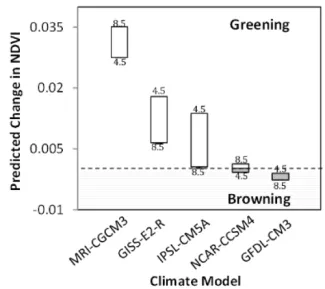Arctic tundra ecosystems have experienced unprecedented change associated with climate warming over recent decades. Across the Pan-Arctic, vegetation productivity and surface greenness have trended positively over the period of satellite observation. However, since 2011 these trends have slowed considerably, showing signs of browning in many regions. It is unclear what factors are driving this change and which regions/landforms will be most sensitive to future browning. Here we provide evidence linking decadal patterns in arctic greening and browning with regional climate change and local permafrost-driven landscape heterogeneity. We analyzed the spatial variability of decadal-scale trends in surface greenness across the Arctic Coastal Plain of northern Alaska (~60,000 km²) using the Landsat archive (1999-2014), in combination with novel 30 m classifications of polygonal tundra and regional watersheds, finding landscape heterogeneity and regional climate change to be the most important factors controlling historical greenness trends. Browning was linked to increased temperature and precipitation, with the exception of young landforms (developed following lake drainage), which will likely continue to green. Spatiotemporal model forecasting suggests carbon uptake potential to be reduced in response to warmer and/or wetter climatic conditions, potentially increasing the net loss of carbon to the atmosphere, at a greater degree than previously expected. Reference: Lara MJ, Nitze I, Grosse G, Martin P, and McGuire AD. 2018. Reduced arctic tundra productivity linked with landform and climate change interactions. Nature Scientific Reports (in review).
For more information, please contact:
Mark Lara
mjlara@illinois.edu

